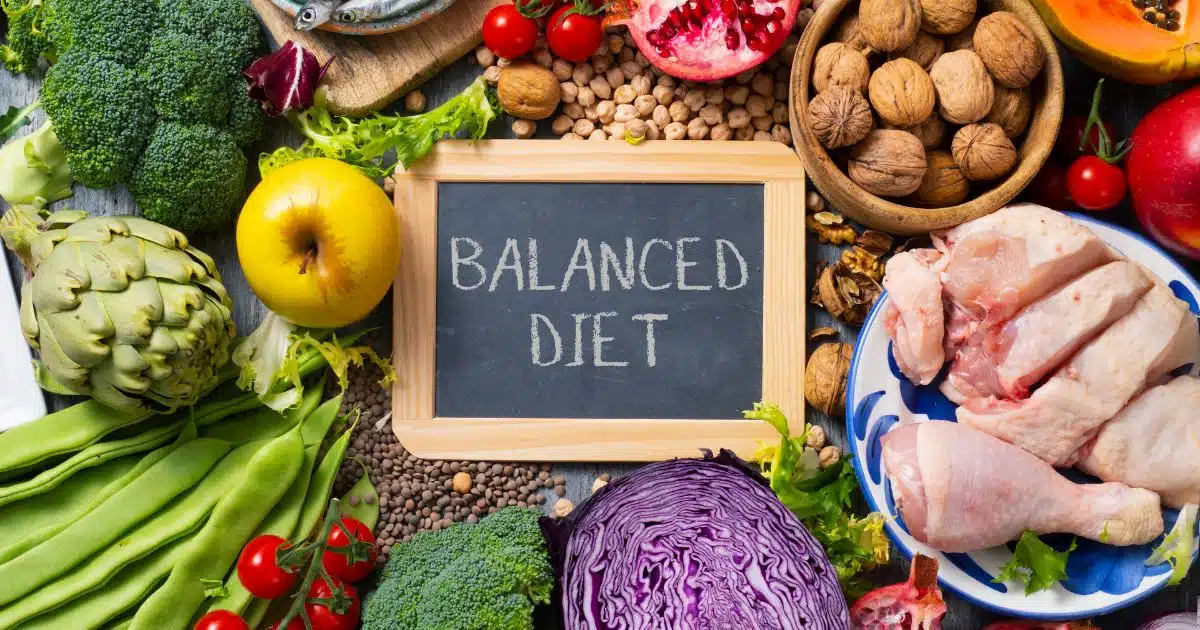Better ADHD Dietary Strategies for Children and Adults
Exploring the connection between diet and ADHD symptoms is essential for managing this condition in children and adults. This blog will look at foods, diets, and strategies to reduce attention deficit hyperactivity disorder symptoms in children and adults.
Healthier Eating: ADHD Diet for Kids
-
- Nutrient-Dense Foods: Emphasize a diet rich in fruits, vegetables, whole grains, and lean proteins. These foods play a role in stabilizing energy and improving focus.
-
- Limit Sugar and Processed Foods: High-sugar and processed foods can worsen ADHD symptoms and increase hyperactivity. Eliminate foods that have artificial food colors and increase blood sugar levels. Focus instead on adding natural, whole foods.
-
- Healthy Fats for Brain Health: Incorporate sources of omega-3 fatty acids, which are crucial for brain health, found in fish, nuts, and seeds.
-
- Stay Hydrated: Proper hydration is critical for cognitive functions, emphasizing regular water intake.
-
- Address Food Sensitivities: Identifying and managing food sensitivities like dairy or artificial additives can be beneficial.
Detailed Nutritional Breakdown for an Effective ADHD Diet and Nutrition
How Brain Foods for ADHD Affect Brain Function and Behavior
To manage ADHD more effectively, it’s crucial to understand how certain nutrients affect brain function.
- Omega-3 fatty acids aid in enhancing cognitive skills and reducing symptoms of hyperactivity and impulsiveness.
- Complex carbohydrates found in whole grains and fruits provide a steady supply of glucose to the brain, improving concentration and ensuring consistent energy levels.
- Lean proteins are rich in amino acids and necessary for neurotransmitter production, which can influence mood, alertness, and calmness.
These nutrients have been proven to improve cognitive function, decrease hyperactivity and impulsivity, and boost overall brain health. By adding these healthy brain foods into an ADHD diet plan, individuals can effectively improve their quality of life.
This example of a meal plan for a day should help to understand how to easily incorporate these healthier foods and nutrients into a brain healthy balanced diet.
ADHD Meal Plan – Sample
Breakfast
-
- Scrambled eggs (rich in protein and Omega-3 if using fortified eggs)
-
- Whole-grain toast
-
- A side of mixed berries (antioxidants and low glycemic index for sustained energy)
Mid-Morning Snack
-
- A small handful of nuts (like walnuts or almonds, high in healthy fats)
-
- A piece of whole fruit (like an apple or banana)
Lunch
-
- Grilled chicken salad with a variety of leafy greens, cherry tomatoes, cucumbers, and olive oil dressing
-
- A serving of quinoa or brown rice (complex carbohydrates)
Afternoon Snack
-
- Carrot and cucumber sticks with hummus (fiber and protein)
Dinner
-
- Baked salmon (rich in Omega-3 fatty acids)
-
- Steamed broccoli and carrots (fiber and essential nutrients)
-
- Sweet potato (complex carbohydrate)
Evening Snack
-
- Greek yogurt with a drizzle of honey and a sprinkle of flaxseeds (protein and Omega-3)
As you can tell from the menu example, including a mix of protein, complex carbs, healthy fats, and plenty of fruits and veggies will:
- Provides energy
- Promotes brain health
- Reduces ADHD symptom triggers.
Proper hydration and balanced electrolytes ensure optimal brain performance and behavioral regulation by preserving neural conductivity.
Valuable Insights from Research and Studies on ADHD Dietary Strategies for Kids
As we always suspected, diet impacts ADHD. Recent studies and research show a link between unhealthy diets, and moods, hyperactivity, forgetfulness and other ADHD symptoms, making it more difficult to manage ADHD and increasing the risk of increased negative behaviors. The research shows that:
-
- Increasing Minerals and Diet Quality: A balanced diet that includes a variety of nutrients, especially minerals, can significantly contribute to the management of ADHD. While minerals can have a positive impact on ADHD symptoms, there’s not enough evidence to suggest specific dietary changes. Nevertheless, the few foods diet that introduces a balance of vitamins and minerals have shown significant improvements in behavior and cognitive abilities in children with ADHD.
-
- Healthy vs. Unhealthy Dietary Patterns: A recent study found that high consumption of fruits and vegetables can also protect against ADHD symptoms. On the other hand, unhealthy dietary patterns that are high in refined sugar and saturated fat increase the risk of ADHD.
-
- Consuming More Fruits and Vegetables Reducing Inattention: Children who consumed more fruits and vegetables exhibited less severe symptoms of inattention in a study. This study suggests that a diet rich in fruits and vegetables will also reduce hyperactivity, focus, and memory.
To sum up, incorporating minerals, fruits and vegetables and reducing or eliminating processed food, refined sugars, and saturated fat in our children’s daily ADHD diet can improve your child’s physical and mental health.
Implementing ADHD Dietary Strategies: Tips for Easy Management and Consistency
If you are considering changing your family’s diet, it is good to remember that thinking is easier than doing. After all, change is hard!
To ease the transition, these tips will help you “hack” your meal plan without overcomplicating the process.
-
- Gradual Introduction and Consistency:
-
- Start by gradually introducing new, healthier food options while phasing out less beneficial ones.
-
- Replace sugary snacks with fruit or nuts, and introduce whole grains like popcorn, wheat cereals, brown rice, and rolled oats in place of bagels, pancakes, pasta, and cookies, which are refined ones.
-
- Making regular, small adjustments can lead to significant, long-term improvements in dietary habits. Consistency is key to forming new habits.
-
- Gradual Introduction and Consistency:
-
- Involvement and Creativity in Meal Preparation:
-
- Involve your child in the meal planning and preparation process. It is both an educational and engaging activity that will help them understand why and how these changes will make a difference in how they feel.
-
- Experiment with recipes together, finding fun ways to include nutrient-rich ingredients. For instance, make smoothies and add a mix of fruits and vegetables. This can be both fun and delicious way to increase your intake of healthy nutrients.
-
- Including children in the process will increase their interest in trying new foods, making the new dietary changes more acceptable and enjoyable.
-
- Involvement and Creativity in Meal Preparation:
To help people with ADHD, start by gradually introducing healthier foods. Make your family part of the process, especially your kid with ADHD. Get them involved in making menu decisions and meal preparation.
Doing so will help them get more excited about ADHD meal planning, adhere to the new plan, and ease into a new healthy ADHD diet that will help them manage ADHD more effectively.
Resources for parents of teens with ADHD:
Innovative Approaches for Effective Treatment of Conduct Disorder in Teenagers with ADHD
Managing Your ADHD Teen: Strategies for Regaining Control and Supporting Healing












